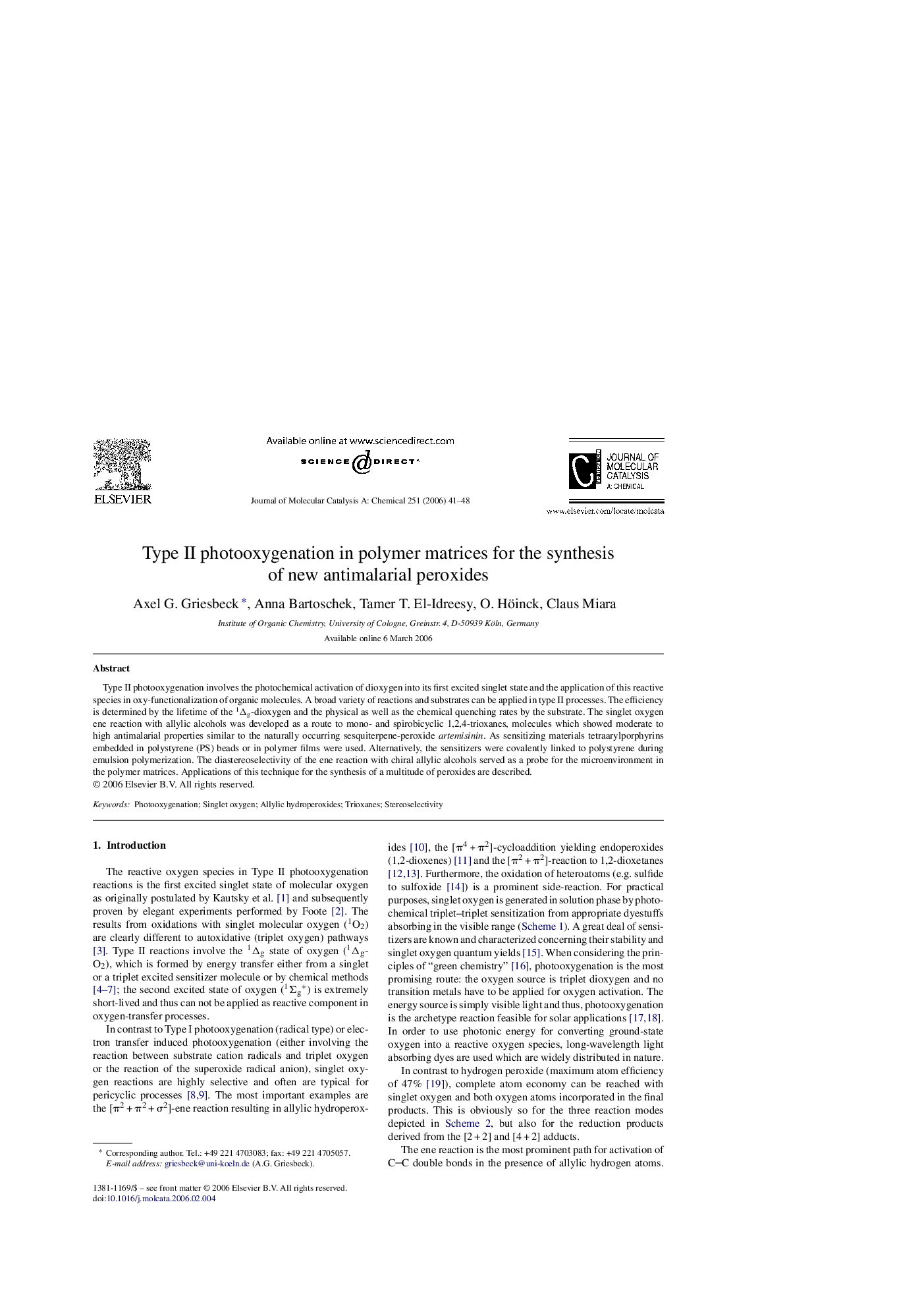| Article ID | Journal | Published Year | Pages | File Type |
|---|---|---|---|---|
| 68472 | Journal of Molecular Catalysis A: Chemical | 2006 | 8 Pages |
Type II photooxygenation involves the photochemical activation of dioxygen into its first excited singlet state and the application of this reactive species in oxy-functionalization of organic molecules. A broad variety of reactions and substrates can be applied in type II processes. The efficiency is determined by the lifetime of the 1Δg-dioxygen and the physical as well as the chemical quenching rates by the substrate. The singlet oxygen ene reaction with allylic alcohols was developed as a route to mono- and spirobicyclic 1,2,4-trioxanes, molecules which showed moderate to high antimalarial properties similar to the naturally occurring sesquiterpene-peroxide artemisinin. As sensitizing materials tetraarylporphyrins embedded in polystyrene (PS) beads or in polymer films were used. Alternatively, the sensitizers were covalently linked to polystyrene during emulsion polymerization. The diastereoselectivity of the ene reaction with chiral allylic alcohols served as a probe for the microenvironment in the polymer matrices. Applications of this technique for the synthesis of a multitude of peroxides are described.
Graphical abstractThe singlet oxygen ene reaction with allylic alcohols was developed as a route to mono- and spirobicyclic 1,2,4-trioxanes, molecules which showed moderate to high antimalarial properties similar to the naturally occurring sesquiterpene-peroxide artemisinin. As sensitizing materials tetraarylporphyrins embedded in polystyrene (PS) beads or in polymer films were used. Alternatively, the sensitizers were covalently linked to polystyrene during emulsion polymerization. Figure optionsDownload full-size imageDownload as PowerPoint slide
